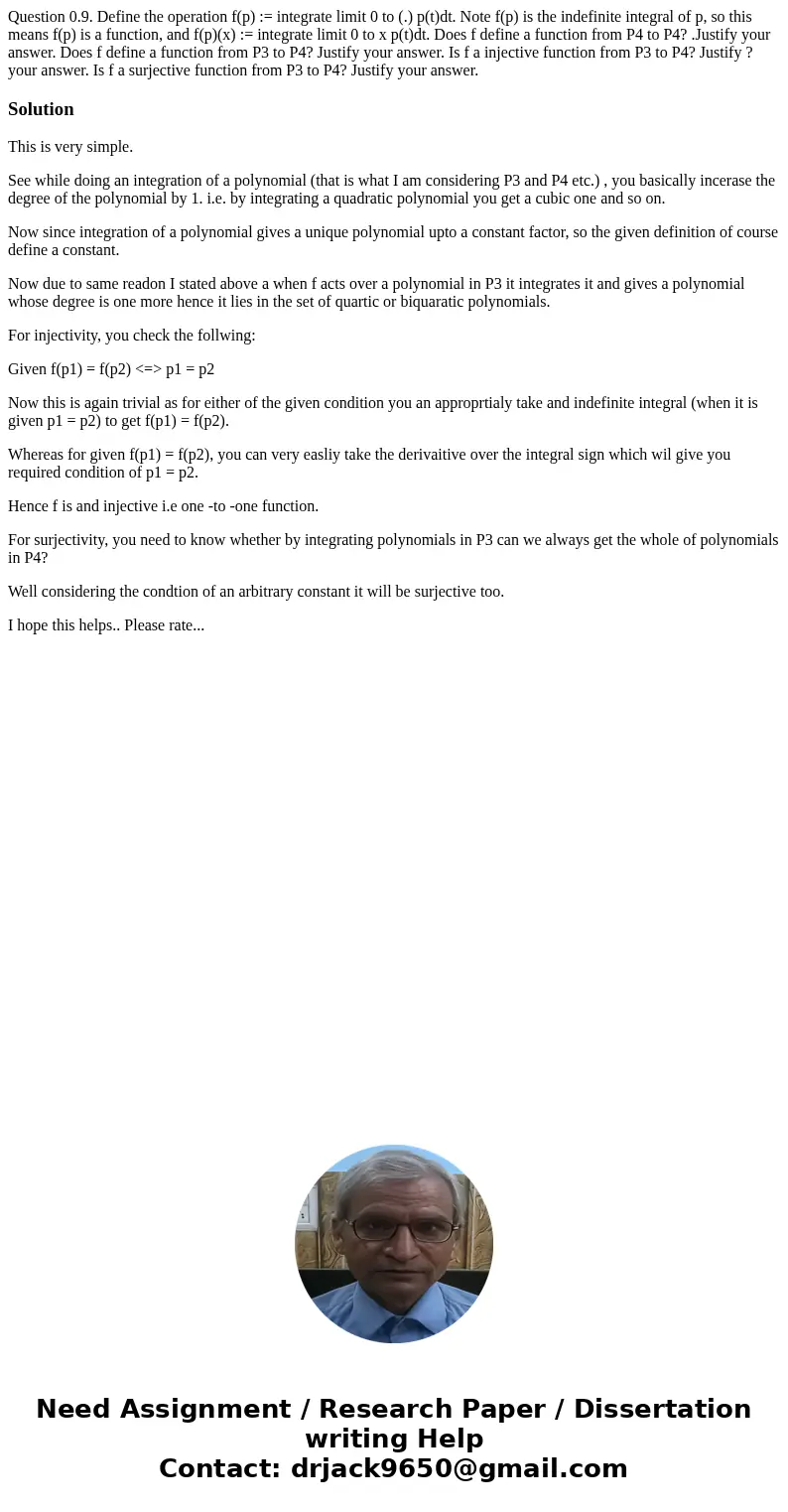Question 09 Define the operation fp integrate limit 0 to p
Solution
This is very simple.
See while doing an integration of a polynomial (that is what I am considering P3 and P4 etc.) , you basically incerase the degree of the polynomial by 1. i.e. by integrating a quadratic polynomial you get a cubic one and so on.
Now since integration of a polynomial gives a unique polynomial upto a constant factor, so the given definition of course define a constant.
Now due to same readon I stated above a when f acts over a polynomial in P3 it integrates it and gives a polynomial whose degree is one more hence it lies in the set of quartic or biquaratic polynomials.
For injectivity, you check the follwing:
Given f(p1) = f(p2) <=> p1 = p2
Now this is again trivial as for either of the given condition you an approprtialy take and indefinite integral (when it is given p1 = p2) to get f(p1) = f(p2).
Whereas for given f(p1) = f(p2), you can very easliy take the derivaitive over the integral sign which wil give you required condition of p1 = p2.
Hence f is and injective i.e one -to -one function.
For surjectivity, you need to know whether by integrating polynomials in P3 can we always get the whole of polynomials in P4?
Well considering the condtion of an arbitrary constant it will be surjective too.
I hope this helps.. Please rate...

 Homework Sourse
Homework Sourse